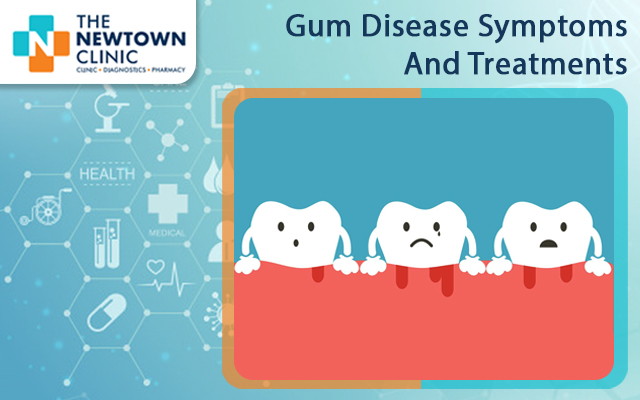There are different symptoms of gum disease. Some of them are:
-
Red, swollen gums: It is a warning sign that your gum needs attention. When you floss or brush, the gums may also feel tender or painful and bleed easily.
-
Bad breath: Millions of bacteria love your mouth as it is a nice and warm home for them. They get to feast on the plaque and live there happily. The toxins they release irritate the gums and teeth and have a foul smell. When bad breath is coming from your mouth, it can be due to gum disease.
-
Gums that get smaller: If it seems that your teeth are looking longer, it does not always mean that they are growing. It may also mean that your gums are shrinking.
-
Sensitive teeth: If your teeth are sensitive to anything hot or cold, it may be a symptom of gum disease related to shrinking gums. The sensitive part of the tooth, known as the dentin, is exposed as the gums shrink.
-
Shifting teeth: Gum disease can make your teeth loosen or move by attacking the bones that hold your teeth into place.
Treatment
Depending on the stage of gum disease you have and your overall health, there are different treatment options available. Here we will mention some of them.
Non-surgical options
-
Professional dental cleaning: The best dentist in Kolkata often removes the plaque and tartar from above and below the gum line of all teeth during a typical check-up.
-
Scaling and root planing: A dentist often carry out this non-surgical, deep-cleaning procedure using local anaesthesia. From above and below the gum line, he/she scrapes away plaque and tartar. This is called scaling. The dentist also makes the rough spots on the root of the tooth smooth. This is known as planing. When the rough spots become smooth, bacteria cannot remain in that place and the gums can properly reattach to the teeth.
Surgical options
-
Flap surgery/pocket reduction surgery: The specialist at a dental clinic in Newtown lifts back the gum and removes the tartar. He/she also sometimes make the irregular surfaces of the damaged bone smooth. The dentist then places the gums in such a way that the tissue fits tightly around the tooth.
-
Bone grafts: The dentist replaces bone destroyed by gum disease by fragments of your bone, synthetic bone or donated bone. There is regrowth of bone using the grafts as a base and it restores stability to the teeth. I recently sent one of my relatives to the best dentist near me for this procedure.
-
Soft tissue grafts: The dentist reinforces thin gums or fills in places where gums have receded in this procedure. He/she stitches grafted tissue, which is taken from the roof of the mouth to the affected area.
-
Guided tissue regeneration: If the bone supporting your teeth gets destroyed, the dentist performs this procedure to stimulate bone and gum tissue growth. It is done along with flap surgery. The dentist inserts a mesh-like fabric between the bone and the gum tissue. This prevents the gum tissue to grow into the area where the bone should be. As a result of this, the bone and connective tissue can properly regrow to support the teeth.
-
Bone surgery: When there is moderate or advanced bone loss, shallow craters form in the bone. The dentist reshapes the bone around the tooth after flap surgery to decrease the craters. The bacteria cannot easily collect and grow due to this.

